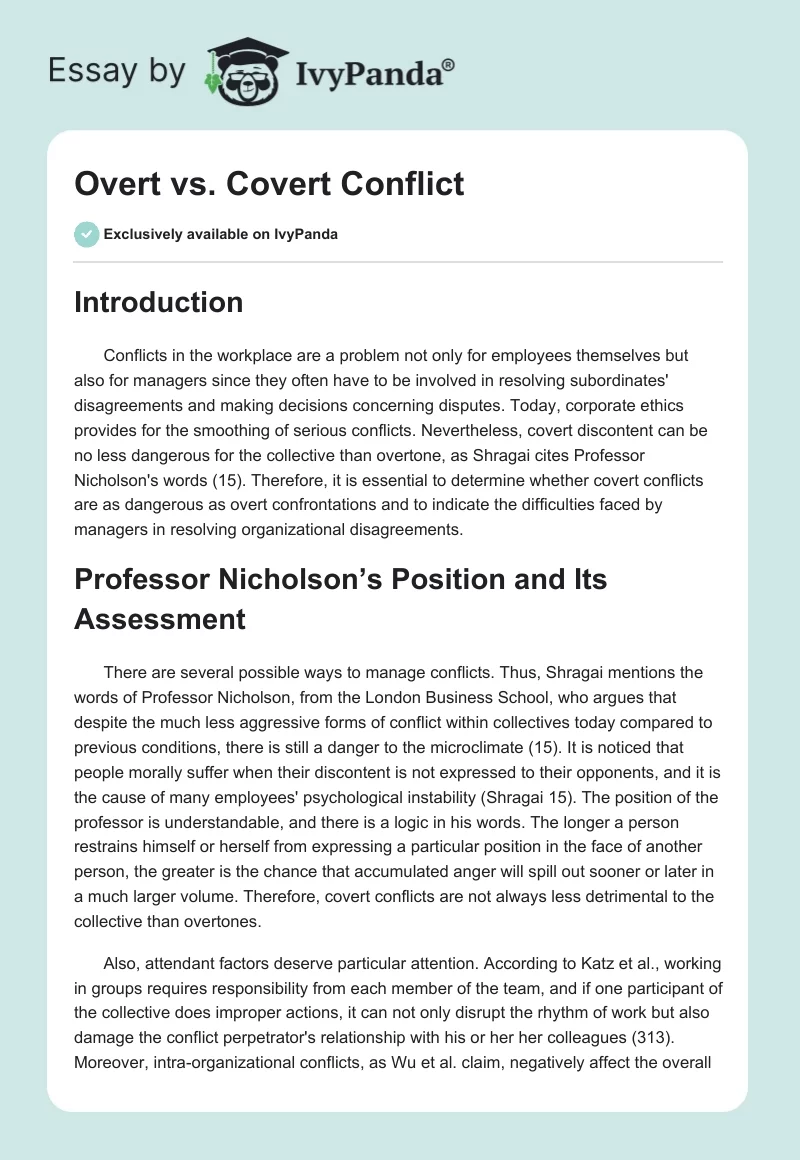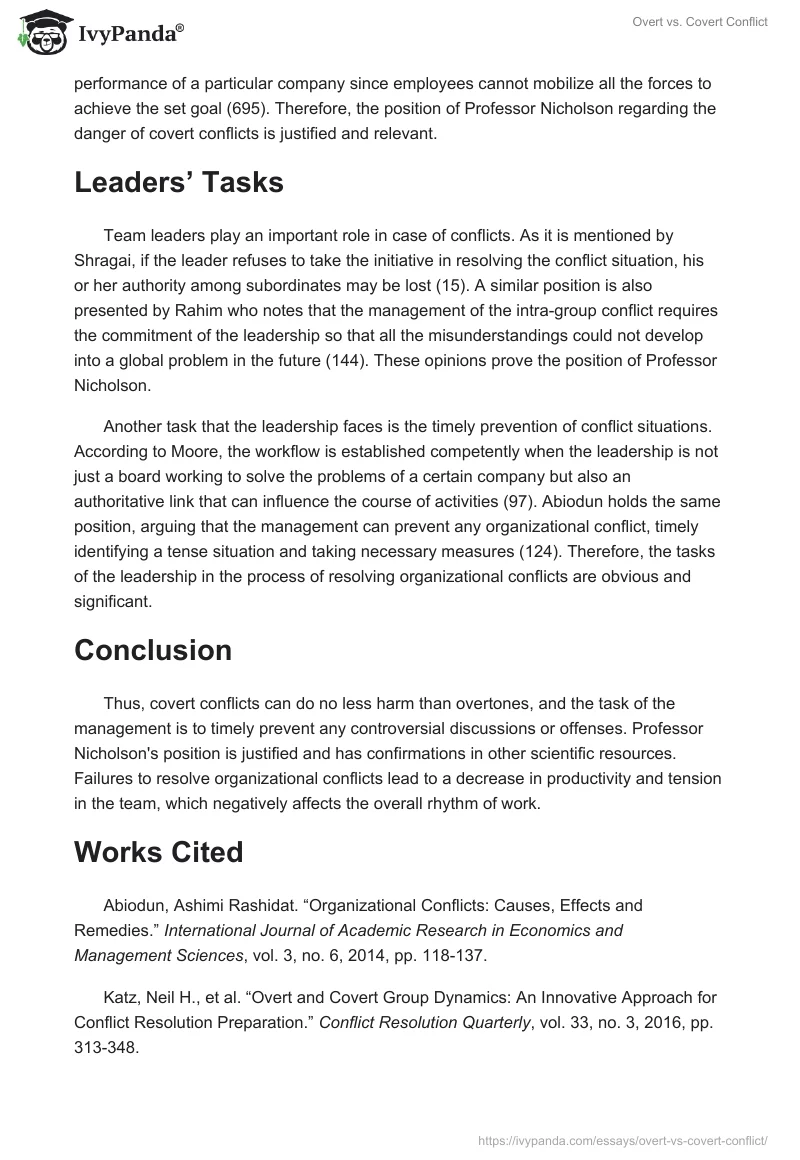Introduction
Conflicts in the workplace are a problem not only for employees themselves but also for managers since they often have to be involved in resolving subordinates’ disagreements and making decisions concerning disputes. Today, corporate ethics provides for the smoothing of serious conflicts. Nevertheless, covert discontent can be no less dangerous for the collective than overtone, as Shragai cites Professor Nicholson’s words (15). Therefore, it is essential to determine whether covert conflicts are as dangerous as overt confrontations and to indicate the difficulties faced by managers in resolving organizational disagreements.
Professor Nicholson’s Position and Its Assessment
There are several possible ways to manage conflicts. Thus, Shragai mentions the words of Professor Nicholson, from the London Business School, who argues that despite the much less aggressive forms of conflict within collectives today compared to previous conditions, there is still a danger to the microclimate (15). It is noticed that people morally suffer when their discontent is not expressed to their opponents, and it is the cause of many employees’ psychological instability (Shragai 15). The position of the professor is understandable, and there is a logic in his words. The longer a person restrains himself or herself from expressing a particular position in the face of another person, the greater is the chance that accumulated anger will spill out sooner or later in a much larger volume. Therefore, covert conflicts are not always less detrimental to the collective than overtones.
Also, attendant factors deserve particular attention. According to Katz et al., working in groups requires responsibility from each member of the team, and if one participant of the collective does improper actions, it can not only disrupt the rhythm of work but also damage the conflict perpetrator’s relationship with his or her her colleagues (313). Moreover, intra-organizational conflicts, as Wu et al. claim, negatively affect the overall performance of a particular company since employees cannot mobilize all the forces to achieve the set goal (695). Therefore, the position of Professor Nicholson regarding the danger of covert conflicts is justified and relevant.
Leaders’ Tasks
Team leaders play an important role in case of conflicts. As it is mentioned by Shragai, if the leader refuses to take the initiative in resolving the conflict situation, his or her authority among subordinates may be lost (15). A similar position is also presented by Rahim who notes that the management of the intra-group conflict requires the commitment of the leadership so that all the misunderstandings could not develop into a global problem in the future (144). These opinions prove the position of Professor Nicholson.
Another task that the leadership faces is the timely prevention of conflict situations. According to Moore, the workflow is established competently when the leadership is not just a board working to solve the problems of a certain company but also an authoritative link that can influence the course of activities (97). Abiodun holds the same position, arguing that the management can prevent any organizational conflict, timely identifying a tense situation and taking necessary measures (124). Therefore, the tasks of the leadership in the process of resolving organizational conflicts are obvious and significant.
Conclusion
Thus, covert conflicts can do no less harm than overtones, and the task of the management is to timely prevent any controversial discussions or offenses. Professor Nicholson’s position is justified and has confirmations in other scientific resources. Failures to resolve organizational conflicts lead to a decrease in productivity and tension in the team, which negatively affects the overall rhythm of work.
Works Cited
Abiodun, Ashimi Rashidat. “Organizational Conflicts: Causes, Effects and Remedies.” International Journal of Academic Research in Economics and Management Sciences, vol. 3, no. 6, 2014, pp. 118-137.
Katz, Neil H., et al. “Overt and Covert Group Dynamics: An Innovative Approach for Conflict Resolution Preparation.” Conflict Resolution Quarterly, vol. 33, no. 3, 2016, pp. 313-348.
Moore, Christopher W. The Mediation Process: Practical Strategies for Resolving Conflict. 4th ed., John Wiley & Sons, 2014.
Rahim, M. Afzalur. Managing Conflict in Organizations. 4th ed., Routledge, 2017.
Shragai, Naomi. “The Managers Who Fear Conflict.” The Financial Times, 5 June 2014, pp. 14-15.
Wu, Guangdong, et al. “Effects of Inter-Organizational Conflicts on Construction Project Added Value in China.” International Journal of Conflict Management, vol. 28, no. 5, 2017, pp. 695-723.


